判决
Poco M7 Pro 是一个真正的惊喜--而且是一个令人愉快的惊喜。这款小米的入门级手机拥有长达六年的软件更新,其运行性能几乎与Galaxy A26 相当,而且还具有一些优势,如现代的设计、更亮的带 PWM 调光功能的 OLED 面板和更长的电池续航时间。就这个价位而言,前后摄像头的质量也出人意料地不错。
但是,小米在其 Poco 设备上做了哪些妥协呢?入门级联发科 SoC 让人对 M7 Pro 的预算根基毫无疑问,其日常性能始终无法让人感到精致。虽然小米承诺提供长期的软件支持,但这款手机搭载的是过时版本的Android 和第一代 HyperOS,这样的组合并不能让人对它的未来充满信心。
不过,如果你不为没有超广角摄像头或 eSIM 支持而感到失望,这款智能手机还是物有所值的。作为替代,几乎相同的Redmi Note 14 5G 也值得一看。
Pros
Cons
价格和供应情况
Table of Contents
- 判决
- Poco M7 Pro 5G 规格
- 手机壳 - 保护小米手机
- 功能 - Poco M7 Pro 限于 USB 2.0
- 软件 - Poco M7 Pro 预装Android 14
- 通信和全球导航卫星系统 - 配备 WiFi 5 的小米智能手机
- 手机功能和语音质量 - 双卡双待的小米手机
- 摄像头 - Poco M7 Pro 使用 OIS
- 配件和保修 - Poco-Phone 不含充电器
- 输入设备和操作 - Poco M7 Pro 响应迅速
- 显示屏 - 120 赫兹的小米手机
- 性能 - Poco M7 Pro 依靠联发科技术
- 游戏 - 小米手机不是游戏手机
- 排放 - Poco M7 Pro 保持凉爽
- 电池续航时间 - 小米智能手机瞬间充满电
- Notebookcheck 总体评分
- 可比较的替代品
小米推出的 Poco M7 Pro 5G 是一款入门级智能手机,旨在将性能、功能和令人印象深刻的拍照功能融为一体。采用 密度 7025这款 Poco 设备为摄影爱好者提供了索尼 IMX882 传感器、大光圈和光学防抖功能。microSD 卡插槽和 3.5 毫米耳机插孔的加入也反映了当今智能手机市场已基本消失的一系列硬件功能。
Poco M7 Pro 5G 规格
手机壳 - 保护小米手机
Poco M7 Pro 厚度仅为 8 毫米,重 190 克,是市场上最轻的智能手机之一。不过,重量轻也带来了一些手感上的妥协:小米手机既没有采用高级玻璃后壳,也没有采用金属边框。尽管如此,它拿在手里的感觉并不廉价,磨砂表面也有助于防止指纹沾染。
Poco M7 Pro 还获得了官方 IP64 等级认证,确保机身既能防尘又能防水溅。
在正面,小米采用了康宁大猩猩 5 号玻璃。外形尺寸与前代产品几乎相同但边框略微纤薄,屏占比提高到 87.4%。整体做工扎实,面板缝隙干净整齐。
» Notebookcheck多媒体笔记本电脑Top 10排名
» Notebookcheck游戏笔记本电脑Top 10排名
» Notebookcheck低价办公/商务笔记本电脑Top 10排名
» Notebookcheck高端办公/商务笔记本电脑Top 10排名
» Notebookcheck工作站笔记本电脑Top 10排名
» Notebookcheck亚笔记本电脑Top 10排名
» Notebookcheck超级本产品Top 10排名
» Notebookcheck变形本产品Top 10排名
» Notebookcheck平板电脑Top 10排名
» Notebookcheck智能手机Top 10排名
» Notebookcheck评测过最出色的笔记本电脑屏幕
» Notebookcheck售价500欧元以下笔记本电脑Top 10排名
» Notebookcheck售价300欧元以下笔记本电脑Top 10排名
功能 - Poco M7 Pro 限于 USB 2.0
Poco M7 Pro 有 8 或 12 GB LPDDR4X 内存可选,并配备 256 或 512 GB UFS 2.2 存储空间。内存最高可扩展至 12 GB,根据小米的说法,在最佳条件下最多可同时运行 42 个应用程序。不过,这种扩展是通过内部存储中的交换文件实现的,运行速度明显慢于实际内存。
正如这个价位段的产品所预期的那样,这款中端智能手机配备了一个基本的 USB 2.0 端口,不支持有线视频输出。不过,它支持 USB-OTG,以及 exFAT 和 NTFS 文件系统。在我们使用 三星固态硬盘 T7在使用三星固态硬盘 T7 进行的文件复制测试中,USB 端口的传输速度缓慢,仅为 24 MB/s。
尽管使用了 OLED 显示技术,但 Poco M7 Pro 并不提供始终在线的通知显示功能。不过,它确实包含了一系列附加功能,如 NFC、Miracast 和红外线发射器,使小米手机可以用作兼容设备的遥控器。
microSD 读卡器
内部 UFS 存储空间可通过混合插槽的 microSD 卡扩展至 2 TB。M7 Pro 还支持 exFAT 文件系统。
在我们的测试中,数据传输速率明显高于 Poco M6 Pro.与 Angelbird AV PRO V60 搭配使用时,我们测得的传输速度接近 60 MB/s。Poco M7 Pro 在 CPD 测试中也取得了优异的成绩。
| SD Card Reader - average JPG Copy Test (av. of 3 runs) | |
| Xiaomi Poco M7 Pro 5G (Angelbird AV Pro V60) | |
| Samsung Galaxy A26 5G (Angelbird AV Pro V60) | |
| Motorola Moto G75 (Angelbird V60) | |
| Average of class Smartphone (5.72 - 58.9, n=68, last 2 years) | |
| Xiaomi Redmi Note 14 5G (Angelbird AV Pro V60) | |
| Xiaomi Poco M6 Pro (Angelbird AV Pro V60) | |
Cross Platform Disk Test (CPDT)
软件 - Poco M7 Pro 预装Android 14
可持续性
小米公司强调,其所有智能手机普遍使用回收材料和生物基高分子材料以及再生塑料。不过,该公司并未提供有关所用材料、回收率或二氧化碳消耗数据的具体细节。Poco M7 Pro 的包装似乎不使用塑料,但使用了保护膜来保护设备。
根据新的欧盟指令理论上,Poco M7 Pro 的更换部件可使用长达七年。
通信和全球导航卫星系统 - 配备 WiFi 5 的小米智能手机
在连接性方面,Poco M7 Pro 的优势和劣势并存。这款入门级手机支持 5G 标准的移动数据,提供广泛的频率范围。4G 频段支持在同价位手机中也相当出色,德语地区的所有相关频率都包括在内。
不过,小米手机的 WiFi 5 标准缺乏面向未来的功能,只有一个发射和接收通道(1x1 MIMO)。在使用参考路由器华硕 ROG Rapture GT-AXE11000 进行的测试中,我们记录到的速度仅为 370 Mbps 左右。好的一面是,数据传输速率在整个测试过程中基本保持稳定。
| Networking | |
| Xiaomi Poco M7 Pro 5G | |
| iperf3 transmit AXE11000 | |
| iperf3 receive AXE11000 | |
| Xiaomi Redmi Note 14 5G | |
| iperf3 transmit AXE11000 | |
| iperf3 receive AXE11000 | |
| Samsung Galaxy A26 5G | |
| iperf3 transmit AXE11000 | |
| iperf3 receive AXE11000 | |
| Xiaomi Poco X7 | |
| iperf3 transmit AXE11000 | |
| iperf3 receive AXE11000 | |
| Motorola Moto G75 | |
| iperf3 transmit AXE11000 6GHz | |
| iperf3 receive AXE11000 6GHz | |
| Xiaomi Poco M6 Pro | |
| iperf3 transmit AXE11000 | |
| iperf3 receive AXE11000 | |
| Average 802.11 a/b/g/n/ac | |
| iperf3 transmit AXE11000 | |
| iperf3 receive AXE11000 | |
| Average of class Smartphone | |
| iperf3 transmit AXE11000 | |
| iperf3 receive AXE11000 | |
| iperf3 transmit AXE11000 6GHz | |
| iperf3 receive AXE11000 6GHz | |
手机功能和语音质量 - 双卡双待的小米手机
摄像头 - Poco M7 Pro 使用 OIS
Poco M7 Pro 的前置摄像头采用 2000 万像素 OmniVision 广角镜头,能在光线充足的条件下捕捉到许多细节。曝光效果也不错。遗憾的是,该传感器仅支持每秒 30 帧的 1080p 视频。这一限制也适用于主摄像头,这令人失望,因为同类机型 X7 Pro 的索尼 IMX882 能够拍摄 4K60 视频。
好的一面是,Poco M7 Pro 的 5000 万像素主摄像头配备了 f/1.5 光圈和光学防抖功能。在日常使用中,它能拍摄出令人印象深刻的日光照片,清晰度均衡,动态范围高。不过,边缘会出现明显的模糊。令人惊讶的是,这款入门级手机在弱光环境下的表现也很出色。大光圈可让大量光线进入相对较小的 1/1.95 传感器,从而获得出色的照明效果和相对较低的模糊度。
Image comparison
Choose a scene and navigate within the first image. One click changes the position on touchscreens. One click on the zoomed-in image opens the original in a new window. The first image shows the scaled photograph of the test device.
WeitwinkelWeitwinkelLow LightZoom 5x在受控照明条件下,我们分析了色彩表现与实际参考色彩的比较。Poco M7 Pro 显示出明显的偏差,但总体而言,就其价格范围而言,相机软件对色彩的计算还是相当不错的。在 ColorChecker Passport 上看不到明显的色彩保真度异常值(>15)。
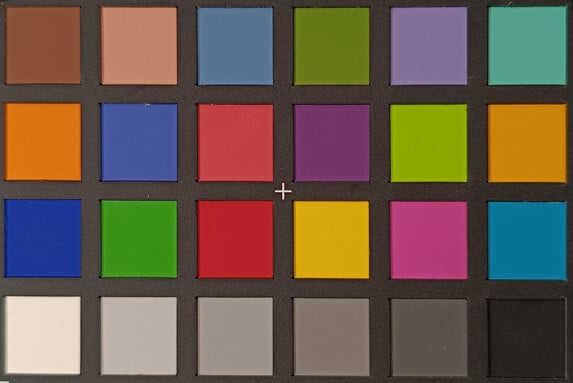
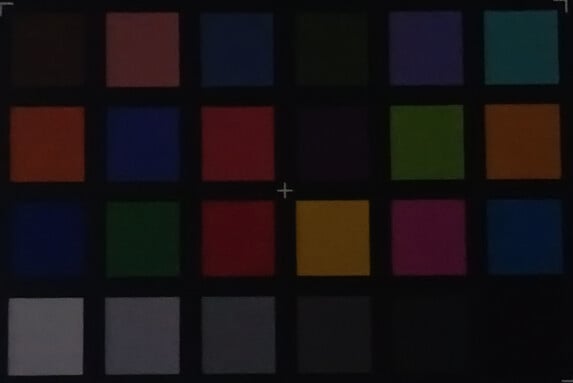
配件和保修 - Poco-Phone 不含充电器
这款入门级手机随附一条 USB-C 数据线、一个保护套和一个 SIM 卡工具。此外,还预装了屏幕保护膜。不过,缺少配套的 45 瓦充电器。
手机保修在德国的保修期为 12 个月,可通过内部保险套餐延长保修期,涵盖意外损坏和盗窃,起价为 39 欧元(建议零售价)。
输入设备和操作 - Poco M7 Pro 响应迅速
6.67 英寸 AMOLED 显示屏上的输入可精确记录到触摸屏的所有边缘。手机支持高达 240 Hz 的触摸采样率,在 Game Turbo 模式下更可提高到 2160 Hz。小米专有的 Wet-Touch 技术还允许在潮湿或湿手的情况下进行操作,在日常使用中效果出奇的好。
得益于高达 120 Hz 的高刷新率,系统可以流畅地呈现动画,虽然 联发科 SoC有时会出现延迟。触觉反馈也不是 Poco M7 Pro 的强项。振动马达产生的振动很不明显,而且声音比较大。
在生物识别解锁方面,有一个显示屏内传感器,最多支持五个手指。在测试中,小米手机的光学指纹识别功能运行可靠,但速度不快。此外,还有一个不安全的基于人工智能的面部识别功能,依靠前置摄像头进行二维识别。
显示屏 - 120 赫兹的小米手机
小米为其入门级手机配备了三星提供的 AMOLED 面板,具有 1080p 分辨率和 8 位色深。该面板支持 120 Hz 的最大刷新率,可自适应降至 60 Hz。根据规格表,它的峰值亮度为 2,100 尼特。此外,它还获得了德国莱茵 TÜV 的三重认证(无闪烁、低蓝光和昼夜节律友好)。
在实际使用中,与日常亮度相关的 APL18 模式产生了 1,163 cd/m² 的出色结果,非常接近小米宣称的 1,200 尼特等级。在显示 HDR 内容时,亮度甚至可以更高,Poco M7 Pro 可以达到 2,118 cd/m²。该显示屏支持 HDR10+、杜比视界(Dolby Vision)和高动态范围视频内容的 HLG。
| |||||||||||||||||||||||||
Brightness Distribution: 97 %
Center on Battery: 1157 cd/m²
Contrast: ∞:1 (Black: 0 cd/m²)
ΔE ColorChecker Calman: 1.1 | ∀{0.5-29.43 Ø4.79}
ΔE Greyscale Calman: 1.6 | ∀{0.09-98 Ø5}
99.6% sRGB (Calman 2D)
Gamma: 2.21
CCT: 6622 K
| Xiaomi Poco M7 Pro 5G AMOLED, 2400x1080, 6.7" | Xiaomi Redmi Note 14 5G AMOLED, 2400x1080, 6.7" | Samsung Galaxy A26 5G Super AMOLED, 2340x1080, 6.7" | Xiaomi Poco X7 AMOLED, 2712x1220, 6.7" | Motorola Moto G75 IPS, 2388x1080, 6.8" | Xiaomi Poco M6 Pro AMOLED, 2400x1080, 6.7" | |
|---|---|---|---|---|---|---|
| Screen | -24% | -101% | -5% | -51% | 2% | |
| Brightness middle (cd/m²) | 1157 | 1147 -1% | 735 -36% | 1156 0% | 947 -18% | 1016 -12% |
| Brightness (cd/m²) | 1151 | 1146 0% | 731 -36% | 1150 0% | 946 -18% | 1016 -12% |
| Brightness Distribution (%) | 97 | 96 -1% | 99 2% | 98 1% | 95 -2% | 94 -3% |
| Black Level * (cd/m²) | 0.46 | |||||
| Colorchecker dE 2000 * | 1.1 | 1.6 -45% | 3.8 -245% | 1.1 -0% | 2.53 -130% | 1.1 -0% |
| Colorchecker dE 2000 max. * | 2.4 | 3.7 -54% | 5.8 -142% | 3.1 -29% | 4.91 -105% | 1.9 21% |
| Greyscale dE 2000 * | 1.6 | 2.3 -44% | 4 -150% | 1.6 -0% | 2.1 -31% | 1.3 19% |
| Gamma | 2.21 100% | 2.27 97% | 1.98 111% | 2.22 99% | 2.237 98% | 2.28 96% |
| CCT | 6622 98% | 6368 102% | 6628 98% | 6304 103% | 6733 97% | 6420 101% |
| Contrast (:1) | 2059 |
* ... smaller is better
为了控制屏幕亮度,Poco M7 Pro 采用了 PWM 调制方式,这可能会导致屏幕闪烁。我们测得的高频率为 952 Hz,与 Poco 手机的规格表(960 Hz)一致。除了高频 PWM 调光外,用示波器测量的调制深度约为 14%,相对来说比较养眼。
Screen Flickering / PWM (Pulse-Width Modulation)
| Screen flickering / PWM detected | 60 Hz Amplitude: 13.77 % Secondary Frequency: 952 Hz | ||
The display backlight flickers at 60 Hz (worst case, e.g., utilizing PWM) . The frequency of 60 Hz is very low, so the flickering may cause eyestrain and headaches after extended use. In comparison: 53 % of all tested devices do not use PWM to dim the display. If PWM was detected, an average of 8152 (minimum: 5 - maximum: 343500) Hz was measured. | |||
固定变焦和不同亮度设置下的测量系列(最低亮度下的振幅曲线看似平坦,但这是缩放造成的。在信息框中,可以看到最小亮度下的振幅放大图)。
Display Response Times
| ↔ Response Time Black to White | ||
|---|---|---|
| 1.47 ms ... rise ↗ and fall ↘ combined | ↗ 0.743 ms rise | |
| ↘ 0.726 ms fall | ||
| The screen shows very fast response rates in our tests and should be very well suited for fast-paced gaming. In comparison, all tested devices range from 0.1 (minimum) to 240 (maximum) ms. » 7 % of all devices are better. This means that the measured response time is better than the average of all tested devices (20.3 ms). | ||
| ↔ Response Time 50% Grey to 80% Grey | ||
| 1.92 ms ... rise ↗ and fall ↘ combined | ↗ 0.9665 ms rise | |
| ↘ 0.955 ms fall | ||
| The screen shows very fast response rates in our tests and should be very well suited for fast-paced gaming. In comparison, all tested devices range from 0.165 (minimum) to 636 (maximum) ms. » 8 % of all devices are better. This means that the measured response time is better than the average of all tested devices (31.7 ms). | ||
性能 - Poco M7 Pro 依靠联发科技术
Poco M7 Pro 配备了 密度 7025-Ultra,尽管贴有 "Ultra "标签,但其性能并没有真正超越联发科 SoC 的标准版本。事实上 摩托 G55在 Geekbench 测试中的表现略胜一筹。不过,小米手机在同价位的基准测试中表现相当不错。手机 Dimensity 7300的 Poco X7的 Dimensity 7300 性能更强,但单核性能的差异并不是特别大。
| UL Procyon AI Inference for Android - Overall Score NNAPI | |
| Average of class Smartphone (3769 - 81594, n=137, last 2 years) | |
| Motorola Moto G75 | |
| Xiaomi Poco M6 Pro | |
| Xiaomi Poco X7 | |
| Xiaomi Poco M7 Pro 5G | |
| Samsung Galaxy A26 5G | |
| Average MediaTek Dimensity 7025 (5946 - 6394, n=2) | |
| Xiaomi Redmi Note 14 5G | |
袩褉芯懈蟹胁芯写褋褌胁械薪薪褘械 img bxm-8-256 GPUPoco M7 Pro 的 GPU 性能明显弱于 Galaxy A26或 Poco X7.事实上,Poco X7 在 GFXBench 中的每秒帧数比同类机型高出一倍多,这要归功于它的 Mali-G615 MP2.
GFXBench 3.0: on screen Manhattan Onscreen OGL | 1920x1080 1080p Manhattan Offscreen
GFXBench 3.1: on screen Manhattan ES 3.1 Onscreen | 1920x1080 Manhattan ES 3.1 Offscreen
GFXBench: on screen Car Chase Onscreen | 1920x1080 Car Chase Offscreen | on screen Aztec Ruins High Tier Onscreen | 2560x1440 Aztec Ruins High Tier Offscreen | on screen Aztec Ruins Normal Tier Onscreen | 1920x1080 Aztec Ruins Normal Tier Offscreen | 3840x2160 4K Aztec Ruins High Tier Offscreen
3DMark: 2560x1440 Sling Shot Extreme (ES 3.1) Unlimited Physics | 2560x1440 Sling Shot Extreme (ES 3.1) Unlimited Graphics | 2560x1440 Sling Shot Extreme (ES 3.1) Unlimited
| GFXBench (DX / GLBenchmark) 2.7 / T-Rex Onscreen | |
| Motorola Moto G75 | |
| Samsung Galaxy A26 5G | |
| Xiaomi Poco X7 | |
| Xiaomi Poco M7 Pro 5G | |
| Xiaomi Redmi Note 14 5G | |
| Xiaomi Poco M6 Pro | |
| GFXBench (DX / GLBenchmark) 2.7 / T-Rex Offscreen | |
| Motorola Moto G75 | |
| Samsung Galaxy A26 5G | |
| Xiaomi Poco X7 | |
| Xiaomi Poco M7 Pro 5G | |
| Xiaomi Redmi Note 14 5G | |
| Xiaomi Poco M6 Pro | |
| GFXBench 3.0 / Manhattan Onscreen OGL | |
| Samsung Galaxy A26 5G | |
| Motorola Moto G75 | |
| Xiaomi Poco X7 | |
| Xiaomi Poco M7 Pro 5G | |
| Xiaomi Redmi Note 14 5G | |
| Xiaomi Poco M6 Pro | |
| GFXBench 3.0 / 1080p Manhattan Offscreen | |
| Xiaomi Poco X7 | |
| Samsung Galaxy A26 5G | |
| Motorola Moto G75 | |
| Xiaomi Poco M7 Pro 5G | |
| Xiaomi Redmi Note 14 5G | |
| Xiaomi Poco M6 Pro | |
| GFXBench 3.1 / Manhattan ES 3.1 Onscreen | |
| Motorola Moto G75 | |
| Samsung Galaxy A26 5G | |
| Xiaomi Poco X7 | |
| Xiaomi Redmi Note 14 5G | |
| Xiaomi Poco M7 Pro 5G | |
| Xiaomi Poco M6 Pro | |
| GFXBench 3.1 / Manhattan ES 3.1 Offscreen | |
| Xiaomi Poco X7 | |
| Motorola Moto G75 | |
| Samsung Galaxy A26 5G | |
| Xiaomi Poco M7 Pro 5G | |
| Xiaomi Redmi Note 14 5G | |
| Xiaomi Poco M6 Pro | |
| GFXBench / Car Chase Onscreen | |
| Samsung Galaxy A26 5G | |
| Motorola Moto G75 | |
| Xiaomi Poco X7 | |
| Xiaomi Poco M7 Pro 5G | |
| Xiaomi Redmi Note 14 5G | |
| Xiaomi Poco M6 Pro | |
| GFXBench / Car Chase Offscreen | |
| Xiaomi Poco X7 | |
| Samsung Galaxy A26 5G | |
| Motorola Moto G75 | |
| Xiaomi Poco M7 Pro 5G | |
| Xiaomi Redmi Note 14 5G | |
| Xiaomi Poco M6 Pro | |
| GFXBench / Aztec Ruins High Tier Onscreen | |
| Samsung Galaxy A26 5G | |
| Motorola Moto G75 | |
| Xiaomi Poco X7 | |
| Xiaomi Poco M7 Pro 5G | |
| Xiaomi Redmi Note 14 5G | |
| Xiaomi Poco M6 Pro | |
| GFXBench / Aztec Ruins High Tier Offscreen | |
| Xiaomi Poco X7 | |
| Motorola Moto G75 | |
| Samsung Galaxy A26 5G | |
| Xiaomi Poco M7 Pro 5G | |
| Xiaomi Redmi Note 14 5G | |
| Xiaomi Poco M6 Pro | |
| GFXBench / Aztec Ruins Normal Tier Onscreen | |
| Motorola Moto G75 | |
| Samsung Galaxy A26 5G | |
| Xiaomi Poco X7 | |
| Xiaomi Poco M7 Pro 5G | |
| Xiaomi Redmi Note 14 5G | |
| Xiaomi Poco M6 Pro | |
| GFXBench / Aztec Ruins Normal Tier Offscreen | |
| Xiaomi Poco X7 | |
| Motorola Moto G75 | |
| Samsung Galaxy A26 5G | |
| Xiaomi Redmi Note 14 5G | |
| Xiaomi Poco M7 Pro 5G | |
| Xiaomi Poco M6 Pro | |
| GFXBench / 4K Aztec Ruins High Tier Offscreen | |
| Xiaomi Poco X7 | |
| Motorola Moto G75 | |
| Samsung Galaxy A26 5G | |
| Xiaomi Poco M7 Pro 5G | |
| Xiaomi Redmi Note 14 5G | |
| Xiaomi Poco M6 Pro | |
| 3DMark / Sling Shot Extreme (ES 3.1) Unlimited Physics | |
| Xiaomi Poco X7 | |
| Samsung Galaxy A26 5G | |
| Xiaomi Poco M6 Pro | |
| Xiaomi Redmi Note 14 5G | |
| Xiaomi Poco M7 Pro 5G | |
| 3DMark / Sling Shot Extreme (ES 3.1) Unlimited Graphics | |
| Xiaomi Poco X7 | |
| Samsung Galaxy A26 5G | |
| Xiaomi Poco M6 Pro | |
| Xiaomi Redmi Note 14 5G | |
| Xiaomi Poco M7 Pro 5G | |
| 3DMark / Sling Shot Extreme (ES 3.1) Unlimited | |
| Xiaomi Poco X7 | |
| Samsung Galaxy A26 5G | |
| Xiaomi Poco M6 Pro | |
| Xiaomi Redmi Note 14 5G | |
| Xiaomi Poco M7 Pro 5G | |
浏览网页时,没有什么大的意外。网站加载速度相当快,不过图片在滚动时有时需要一些时间才能显示出来。浏览器基准测试的结果也很稳定,符合我们对入门级手机的预期。
| Jetstream 2 - 2.0 Total Score | |
| Average of class Smartphone (23.8 - 387, n=153, last 2 years) | |
| Motorola Moto G75 (Chrome 131) | |
| Samsung Galaxy A26 5G (Chrome 135.0.7049.111) | |
| Xiaomi Redmi Note 14 5G (Chrome 133.0.6943.49) | |
| Average MediaTek Dimensity 7025 (108.8 - 111.2, n=3) | |
| Xiaomi Poco M7 Pro 5G (Chrome 135) | |
| Xiaomi Poco X7 (Chrome 132.0.6834.163) | |
| Xiaomi Poco M6 Pro (chrome 122) | |
| Speedometer 2.0 - Result 2.0 | |
| Average of class Smartphone (15.2 - 643, n=129, last 2 years) | |
| Samsung Galaxy A26 5G (Chrome 135.0.7049.111) | |
| Xiaomi Poco M7 Pro 5G (Chrome 135) | |
| Average MediaTek Dimensity 7025 (107 - 112, n=2) | |
| Xiaomi Redmi Note 14 5G (Chrome 133.0.6943.49) | |
| Xiaomi Poco X7 (Chrome 132.0.6834.163) | |
| Motorola Moto G75 (Chrome 131) | |
| Xiaomi Poco M6 Pro (chrome 122) | |
| Speedometer 3 - Score 3.0 | |
| Average of class Smartphone (1.03 - 42.8, n=123, last 2 years) | |
| Samsung Galaxy A26 5G (Chrome 135.0.7049.111) | |
| Xiaomi Poco M7 Pro 5G (Chrome 135) | |
| Average MediaTek Dimensity 7025 (6.79 - 7.45, n=2) | |
| Motorola Moto G75 (Chrome 131) | |
| Xiaomi Poco X7 (Chrome 132.0.6834.163) | |
| Xiaomi Redmi Note 14 5G (Chrome 133.0.6943.49) | |
| WebXPRT 4 - Overall | |
| Average of class Smartphone (27 - 306, n=147, last 2 years) | |
| Motorola Moto G75 (Chrome 131) | |
| Samsung Galaxy A26 5G (Chrome 135.0.7049.111) | |
| Xiaomi Redmi Note 14 5G (Chrome 133.0.6943.49) | |
| Average MediaTek Dimensity 7025 (107 - 112, n=2) | |
| Xiaomi Poco M7 Pro 5G (Chrome 135) | |
| Xiaomi Poco X7 (Chrome 132.0.6834.163) | |
| Xiaomi Poco M6 Pro (Chrome 122) | |
| Octane V2 - Total Score | |
| Average of class Smartphone (2228 - 121337, n=200, last 2 years) | |
| Samsung Galaxy A26 5G (Chrome 135.0.7049.111) | |
| Motorola Moto G75 (Chrome 131) | |
| Xiaomi Poco M7 Pro 5G (Chrome 135) | |
| Xiaomi Redmi Note 14 5G (Chrome 133.0.6943.49) | |
| Average MediaTek Dimensity 7025 (34723 - 36734, n=3) | |
| Xiaomi Poco X7 (Chrome 132.0.6834.163) | |
| Xiaomi Poco M6 Pro (chrome 122) | |
| Mozilla Kraken 1.1 - Total | |
| Xiaomi Poco M6 Pro (chrome 122) | |
| Xiaomi Poco X7 | |
| Average of class Smartphone (257 - 28190, n=155, last 2 years) | |
| Xiaomi Poco M7 Pro 5G (Chrome 135) | |
| Average MediaTek Dimensity 7025 (1131 - 1132, n=2) | |
| Xiaomi Redmi Note 14 5G (Chrome 133.0.6943.49) | |
| Motorola Moto G75 (Chrome 131) | |
| Samsung Galaxy A26 5G (Chrome 135.0.7049.111) | |
* ... smaller is better
在速度方面,Poco 手机的 UFS 存储系统性能稳定。作为一款入门级手机,Androbench 基准测试的结果完全可以接受。
| Xiaomi Poco M7 Pro 5G | Xiaomi Redmi Note 14 5G | Samsung Galaxy A26 5G | Xiaomi Poco X7 | Motorola Moto G75 | Xiaomi Poco M6 Pro | Average 256 GB UFS 2.2 Flash | Average of class Smartphone | |
|---|---|---|---|---|---|---|---|---|
| AndroBench 3-5 | -6% | -52% | -20% | 5% | -5% | -11% | 67% | |
| Sequential Read 256KB (MB/s) | 987.81 | 950.62 -4% | 528.54 -46% | 947.4 -4% | 1023.1 4% | 973.53 -1% | 901 ? -9% | 2222 ? 125% |
| Sequential Write 256KB (MB/s) | 943.43 | 792.56 -16% | 251.43 -73% | 915.23 -3% | 868.4 -8% | 910.9 -3% | 723 ? -23% | 1838 ? 95% |
| Random Read 4KB (MB/s) | 243.98 | 257.91 6% | 219.57 -10% | 100.16 -59% | 285.3 17% | 236.72 -3% | 228 ? -7% | 295 ? 21% |
| Random Write 4KB (MB/s) | 265.26 | 245.16 -8% | 61.8 -77% | 226.88 -14% | 279.5 5% | 228.61 -14% | 249 ? -6% | 336 ? 27% |
游戏 - 小米手机不是游戏手机
为了更好地评估内置 IMG GPU我们与GameBench 合作,对 Play Store 中的两款游戏进行了测试。.我们测量了每款游戏的精确帧率。
Poco M7 Pro 确实具备游戏能力,至少在最低设置下是如此。在《源氏冲击》中,我们测得的帧数约为 35 FPS,而在《PUBG Mobile》中,平均帧数约为 40 FPS。然而,在更高的图形设置下,Poco 手机就会陷入困境,无法再获得流畅的帧率。对于大逃杀游戏,甚至无法解锁高细节设置(UHD)。
排放 - Poco M7 Pro 保持凉爽
温度
Poco M7 Pro 能很好地控制外壳的表面温度。因为 IMG BXM-8-256由于与 Vulkan 不兼容,不支持 3DMark 压力测试,GFXBench 电池测试也不提供结果,因此我们无法提供节流的精确值。与其他入门级 SoC 一样,Poco M7 Pro 的节流应该小于 2%。
(±) The maximum temperature on the upper side is 41.4 °C / 107 F, compared to the average of 35.2 °C / 95 F, ranging from 21.9 to 247 °C for the class Smartphone.
(+) The bottom heats up to a maximum of 39.8 °C / 104 F, compared to the average of 34 °C / 93 F
(+) In idle usage, the average temperature for the upper side is 26.4 °C / 80 F, compared to the device average of 32.9 °C / 91 F.
发言人
小米入门级智能手机配备了两个扬声器,低音和中音都很突出。考虑到价格,其音质令人印象深刻。对于那些追求更丰富低音的用户,3.5 毫米耳机插孔可用于有线聆听,不过它的噪音水平相当高,为 42 dBFS。此外,还可通过蓝牙 5.3 串流无线音频,蓝牙 5.3 支持多种编解码器。
Xiaomi Poco M7 Pro 5G audio analysis
(+) | speakers can play relatively loud (91.9 dB)
Bass 100 - 315 Hz
(-) | nearly no bass - on average 25.3% lower than median
(+) | bass is linear (3.7% delta to prev. frequency)
Mids 400 - 2000 Hz
(±) | reduced mids - on average 7.8% lower than median
(+) | mids are linear (5.9% delta to prev. frequency)
Highs 2 - 16 kHz
(+) | balanced highs - only 3.7% away from median
(+) | highs are linear (3.8% delta to prev. frequency)
Overall 100 - 16.000 Hz
(±) | linearity of overall sound is average (18.3% difference to median)
Compared to same class
» 18% of all tested devices in this class were better, 9% similar, 74% worse
» The best had a delta of 11%, average was 35%, worst was 134%
Compared to all devices tested
» 39% of all tested devices were better, 8% similar, 54% worse
» The best had a delta of 4%, average was 24%, worst was 134%
Motorola Moto G75 audio analysis
(+) | speakers can play relatively loud (85.2 dB)
Bass 100 - 315 Hz
(-) | nearly no bass - on average 26% lower than median
(±) | linearity of bass is average (14.1% delta to prev. frequency)
Mids 400 - 2000 Hz
(±) | higher mids - on average 5.6% higher than median
(±) | linearity of mids is average (7.7% delta to prev. frequency)
Highs 2 - 16 kHz
(+) | balanced highs - only 3.1% away from median
(±) | linearity of highs is average (7.3% delta to prev. frequency)
Overall 100 - 16.000 Hz
(±) | linearity of overall sound is average (20.8% difference to median)
Compared to same class
» 37% of all tested devices in this class were better, 8% similar, 55% worse
» The best had a delta of 11%, average was 35%, worst was 134%
Compared to all devices tested
» 55% of all tested devices were better, 8% similar, 37% worse
» The best had a delta of 4%, average was 24%, worst was 134%
电池续航时间 - 小米智能手机瞬间充满电
耗电量
Poco M7 Pro 的聚合物锂离子电池容量为 5,110 mAh,充电功率可达 45 瓦。充电时间约为 60 分钟。遗憾的是,这款入门级手机不支持无线充电,但支持多种快速充电协议。无论是在空闲状态还是在负载情况下,功耗都很低。
| Off / Standby | |
| Idle | |
| Load |
|
Key:
min: | |
| Xiaomi Poco M7 Pro 5G 5110 mAh | Xiaomi Redmi Note 14 5G 5110 mAh | Samsung Galaxy A26 5G 5000 mAh | Xiaomi Poco X7 5110 mAh | Motorola Moto G75 5000 mAh | Xiaomi Poco M6 Pro 5000 mAh | Average MediaTek Dimensity 7025 | Average of class Smartphone | |
|---|---|---|---|---|---|---|---|---|
| Power Consumption | -12% | -39% | -1% | -37% | -16% | -6% | -36% | |
| Idle Minimum * (Watt) | 1.14 | 1.15 -1% | 1.17 -3% | 1.09 4% | 0.8 30% | 1 12% | 1.145 ? -0% | 0.847 ? 26% |
| Idle Average * (Watt) | 1.3 | 1.55 -19% | 1.94 -49% | 1.28 2% | 1.1 15% | 1.19 8% | 1.425 ? -10% | 1.431 ? -10% |
| Idle Maximum * (Watt) | 1.34 | 1.57 -17% | 2.03 -51% | 1.31 2% | 1.5 -12% | 1.33 1% | 1.455 ? -9% | 1.61 ? -20% |
| Load Average * (Watt) | 2.96 | 3.87 -31% | 4.31 -46% | 3.25 -10% | 8.7 -194% | 6.27 -112% | 3.42 ? -16% | 7.09 ? -140% |
| Load Maximum * (Watt) | 8.18 | 7.66 6% | 11.79 -44% | 8.62 -5% | 10.1 -23% | 7.19 12% | 7.92 ? 3% | 11.2 ? -37% |
* ... smaller is better
Power consumption: Geekbench (150 cd/m²)
Power consumption: GFXbench (150 cd/m²)
电池寿命
Poco M7 Pro 的电池续航能力令人印象深刻。在无休止的视频循环测试中,通信模块的能耗通常较高,但并不明显。续航时间为 23 小时,比我们的 Wi-Fi 电池测试多出约 5.5 小时,这两项测试都是在校准显示屏亮度为 150 cd/m² 的情况下进行的。
| Xiaomi Poco M7 Pro 5G 5110 mAh | Xiaomi Redmi Note 14 5G 5110 mAh | Samsung Galaxy A26 5G 5000 mAh | Xiaomi Poco X7 5110 mAh | Motorola Moto G75 5000 mAh | Xiaomi Poco M6 Pro 5000 mAh | |
|---|---|---|---|---|---|---|
| Battery runtime | -13% | -18% | 1% | 13% | -19% | |
| Reader / Idle (h) | 34.7 | 30 -14% | 33.1 -5% | 50.4 45% | ||
| H.264 (h) | 22.9 | 17 -26% | 18.7 -18% | 22.2 -3% | ||
| WiFi v1.3 (h) | 17.4 | 12.9 -26% | 12.3 -29% | 17.5 1% | 19.6 13% | 14.1 -19% |
| Load (h) | 5.2 | 6 15% | 4.2 -19% | 5 -4% |
Notebookcheck 总体评分
Poco M7 Pro 的更新支持时间出奇地长,因此 200 欧元(约合 215 美元)以下的价格几乎毫无悬念。
Xiaomi Poco M7 Pro 5G
- 05/16/2025 v8
Marcus Herbrich
可比较的替代品
Transparency
The selection of devices to be reviewed is made by our editorial team. The test sample was provided to the author as a loan by the manufacturer or retailer for the purpose of this review. The lender had no influence on this review, nor did the manufacturer receive a copy of this review before publication. There was no obligation to publish this review. As an independent media company, Notebookcheck is not subjected to the authority of manufacturers, retailers or publishers.
This is how Notebookcheck is testing
Every year, Notebookcheck independently reviews hundreds of laptops and smartphones using standardized procedures to ensure that all results are comparable. We have continuously developed our test methods for around 20 years and set industry standards in the process. In our test labs, high-quality measuring equipment is utilized by experienced technicians and editors. These tests involve a multi-stage validation process. Our complex rating system is based on hundreds of well-founded measurements and benchmarks, which maintains objectivity. Further information on our test methods can be found here.




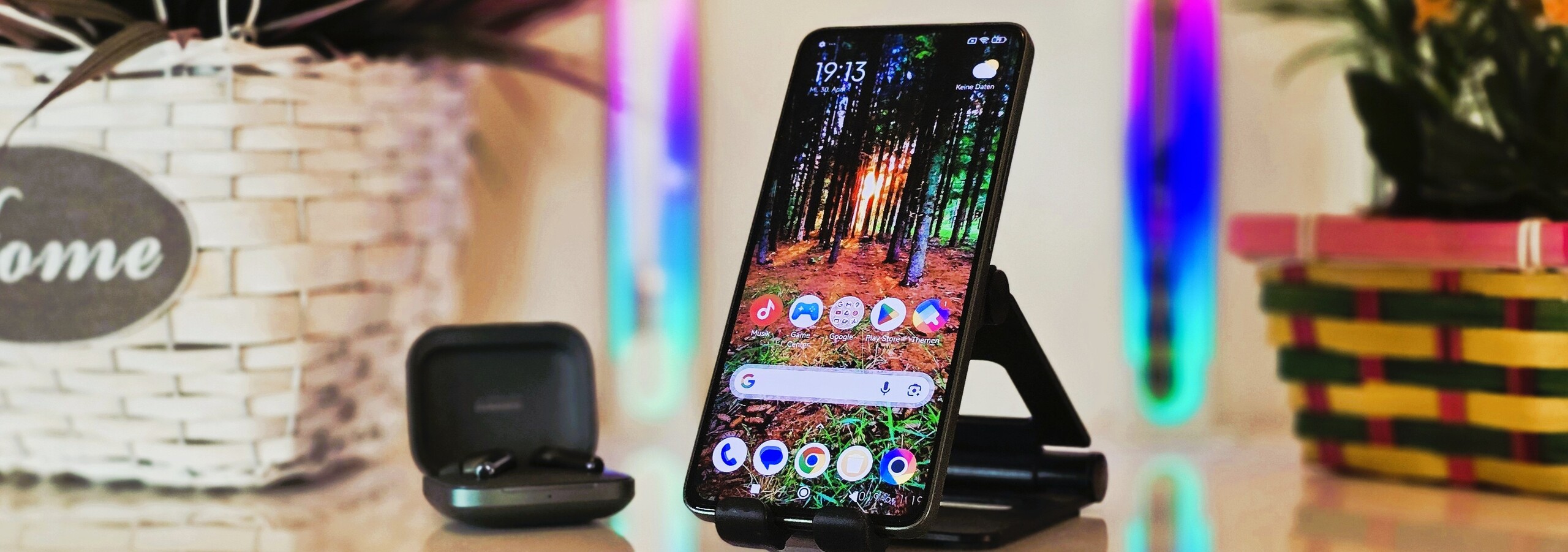


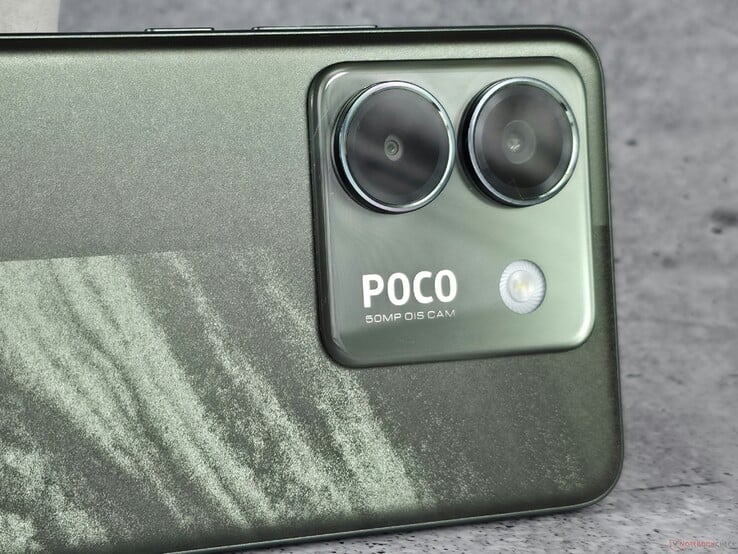








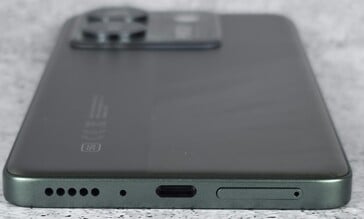
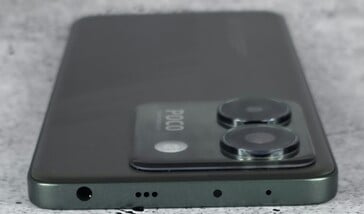

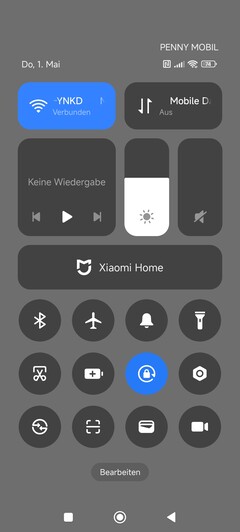

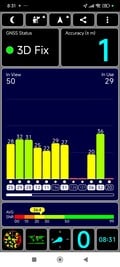
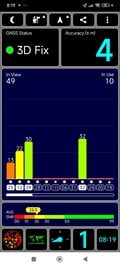

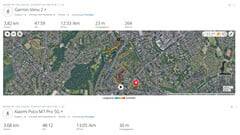
















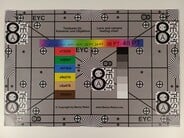



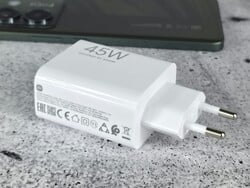
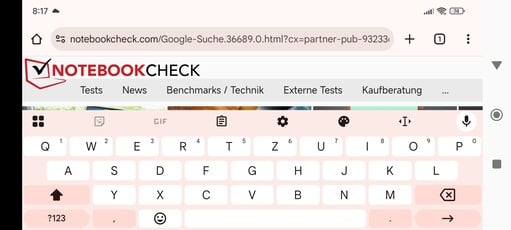


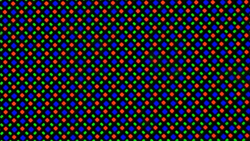
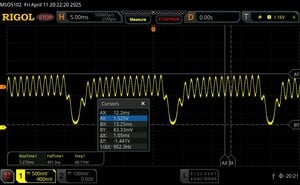





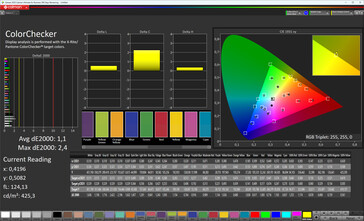
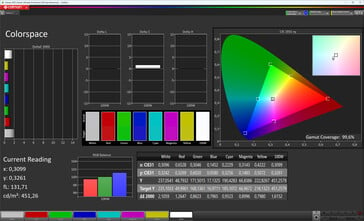
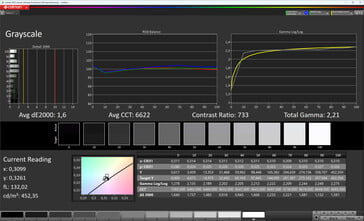
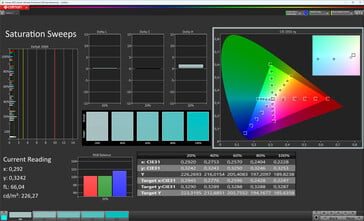
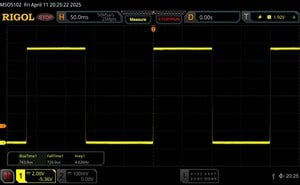
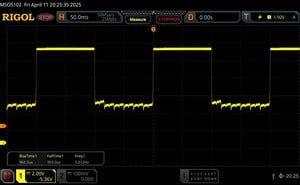
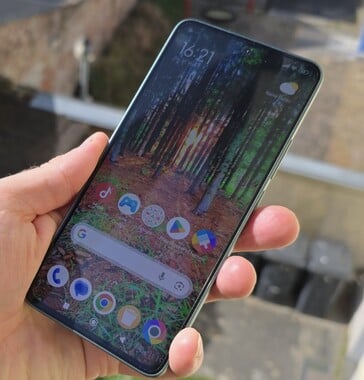
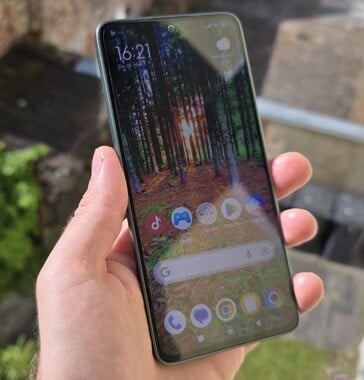



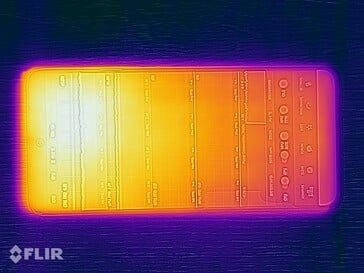
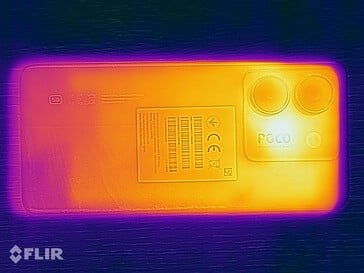
 Total Sustainability Score:
Total Sustainability Score: 







